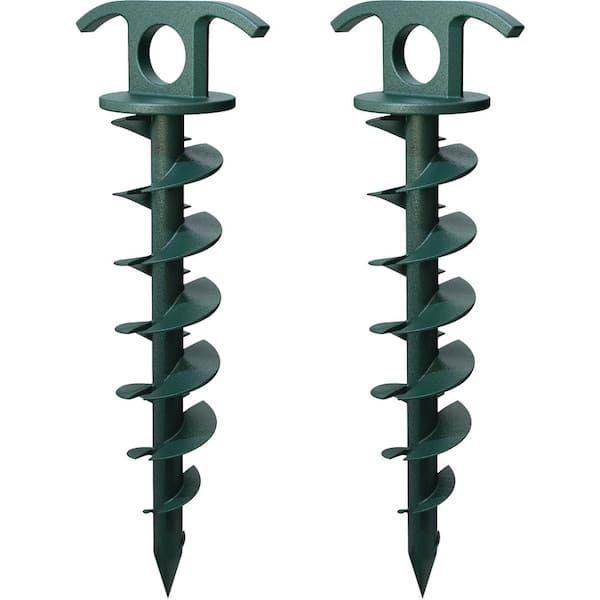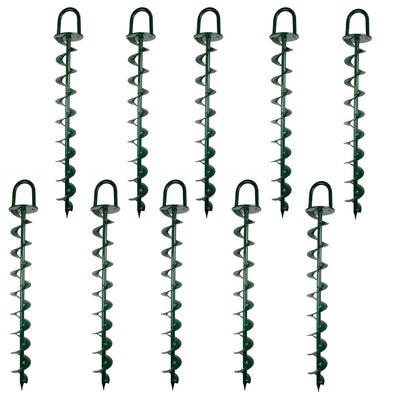New Advancements in Ground Anchor Design and Their Benefits
New Advancements in Ground Anchor Design and Their Benefits
Blog Article
Discover the Different Kinds of Ground Anchor for Your Following Job
From auger anchors, which excel in varied dirt conditions, to stake anchors designed for short-term installations, the alternatives are many. In addition, concrete and screw anchors present one-of-a-kind advantages in details situations, while deadman supports are customized for applications needing resistance to lateral forces.

Auger Anchors
Auger anchors are a popular option in various building and landscaping jobs due to their special design and effective securing capacities. These anchors contain a helical screw-like shaft that is driven right into the ground, enabling a secure and steady hold. The spiral style facilitates very easy installment and maximizes resistance against lateral forces, making auger anchors particularly efficient in applications such as fencing, momentary structures, and disintegration control.
The installment procedure of auger anchors is reasonably uncomplicated. Auger anchors can be quickly gotten rid of and recycled, which adds to their cost-effectiveness and sustainability.
Among the significant advantages of auger supports is their capacity to distribute tons evenly across the surrounding soil, reducing the threat of soil disruption and lessening ecological effect. Furthermore, they are less at risk to heaving or loosening with time compared to standard securing approaches. Auger anchors are an excellent option for jobs requiring trusted and long lasting anchoring solutions.

Risk Anchors
When it concerns protecting frameworks in a range of outside applications, risk anchors provide a straightforward and trustworthy solution. These anchors are commonly built from sturdy materials such as steel or aluminum, created to withstand ecological tensions while providing optimal security. Their basic design enables quick setup, making them an excellent option for short-term or long-term anchoring needs.
Risk supports are particularly beneficial in protecting camping tents, covers, and various other lightweight frameworks versus wind and weather condition. They operate by being driven right into the ground at an angle, developing a strong hold that stands up to pull-out forces - Ground Anchor. The performance of risk anchors relies on a number of variables, including soil kind, wetness content, and the angle of installation
For included protection, numerous stake supports include add-on factors for ropes or straps, permitting for stress modifications as essential. In applications such as landscape design or construction, they can efficiently maintain equipment or structures on uneven surface. In general, stake supports offer a functional and affordable service for protecting different exterior setups, making them a recommended choice for professionals and DIY fanatics alike.
Concrete Anchors
Concrete supports give a robust option for securing frameworks to concrete surfaces, ensuring security and security in numerous applications. These supports are important for jobs varying from domestic buildings to massive industrial installments. They are available in various kinds, including growth anchors, adhesive supports, and undercut anchors, each created for particular load demands and environmental problems.
When mounted,Growth supports count on mechanical devices to hold the concrete. They are ideal for tool to durable applications. Sticky anchors make use of high-strength epoxy or resin to bond the support to the concrete, using superior load-bearing capabilities, especially in fractured concrete scenarios. Undercut supports create a distinct shape within the concrete, providing outstanding holding power, particularly in applications where tensile tons are widespread.
When performed appropriately, concrete anchors substantially enhance the architectural honesty of numerous tasks, making them crucial in Going Here modern construction techniques. Recognizing the specific needs of your job will assist in picking the best type of concrete anchor for the task.
Screw Anchors

Screw anchors are a flexible attaching remedy that can be efficiently employed in a range of applications where standard concrete anchors may not suffice. These supports include a helical style that permits them to be quickly driven into the ground, making them optimal for use in dirt and other substrates. Their one-of-a-kind framework gives exceptional holding power and resistance to pull-out pressures, making them appropriate for various tasks, from landscaping to architectural support.
One of the main advantages of screw anchors is their convenience of installation. They call for minimal devices and can typically be set up without the requirement for excavation, which conserves both time and labor costs. Additionally, screw supports can be eliminated and reused, providing a lasting service for momentary applications.
Screw supports are especially useful in areas where soil conditions are testing, such as sandy or loosened soils. Their capability to be installed at differing midsts enables customization based on details task demands. Overall, screw anchors provide a effective and trusted anchoring method, making them an excellent selection for designers and contractors seeking effective remedies for their projects.
Deadman Anchors
Deadman anchors serve as a robust solution for supporting structures in challenging conditions, especially where conventional anchoring approaches may fail. These anchors include big, heavy objects hidden underground, which create resistance against side pressures. The layout usually includes a horizontal part, such as a block of concrete or a steel plate, buried in the dirt, to which wires or straps are attached.
The efficiency of deadman supports depends on their capability these details to disperse tons over a larger location, reducing the risk of failure in unsteady soil conditions. They are especially helpful in applications such as keeping wall surfaces, temporary frameworks, and incline stabilization, where dirt movement can endanger the stability of the structure.
Installment of deadman anchors calls for cautious planning to guarantee they are positioned at the appropriate deepness and positioning, optimizing their load-bearing capacity. While this contact form they may require even more labor and product than lightweight supports, their reliability in negative problems makes them vital for long-term tasks. Deadman anchors are functional and can be adapted to different applications, making them a best choice for engineers encountering one-of-a-kind challenges in their jobs.
Conclusion
Auger anchors succeed in diverse soil conditions, while risk supports fit temporary applications. For concrete surface areas, growth and sticky supports provide dependable choices, and screw anchors offer adaptability in difficult surfaces.
Additionally, concrete and screw anchors existing special advantages in specific circumstances, while deadman supports are customized for applications needing resistance to side pressures - Ground Anchor.Auger supports are a preferred selection in different building and construction and landscape design jobs due to their one-of-a-kind layout and efficient anchoring capacities. They come in different kinds, consisting of expansion anchors, glue supports, and undercut anchors, each made for details lots demands and environmental problems
Sticky anchors make use of high-strength epoxy or material to bond the anchor to the concrete, offering superior load-bearing capabilities, specifically in cracked concrete circumstances. On the whole, screw anchors provide a efficient and dependable anchoring method, making them an outstanding selection for service providers and engineers looking for efficient remedies for their jobs.
Report this page